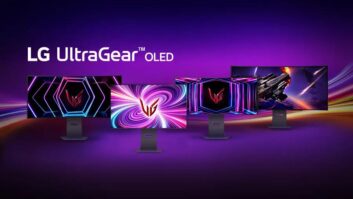NEW YORK — While 3D technology
has taken a firm hold in the television
category, it has just started to work its
way into the PC display segment.
The general consensus among vendors
is that 3D will find a strong niche with
gamers and will eventually have a positive
impact on monitor sales, but that
this will not happen for several years.
This is best seen by how vendors are
rolling out 3D. Acer and ViewSonic have
each introduced a single model. While
Hewlett-Packard has so far declined to
follow suit, but the company sees a great
deal of potential for this technology.
“Today it may be more [of a] niche. Going
forward, though, it has some serious
potential. Depending on the content, 3D
on a desktop monitor can be a more personal,
up-close experience than watching
3D on a large-screen television with a greater
number of people. Gaming, for instance,
certainly resonates with the up close experience,”
said Pete Ellis, worldwide product
manager, consumer displays.
Ray Sawall, product marketing senior
manager, added that 3D can help bolster
monitor sales, but gaming alone will not
do the trick.
“3D has the potential to reinvigorate
the monitor category if movie viewing
takes hold,” he said.
Acer’s first venture into this space is
the 23.6w-inch GD235HZ, which started
shipping in early February. This unit
requires the use of special 3D goggles
from Nvidia that carry a $199 suggested
retail, but Acer believes consumers truly
interested in a good 3D experience will
pay the extra price.
ViewSonic was one of the first companies
to introduce 3D into the PC space
when it began shipping its VX2265wm
in April 2009.
Sean Gunduz, ViewSonic’s senior
product manager, said gaming enthusiasts
currently comprise about 5 percent
of the monitor market; 3D should give
the category some positive momentum
because the technology is going to change
the overall perception of gaming. This
impact will be strong in the gaming niche
its wider impact will not be as great.
“We do expect to see an increase monitor
sales, but do not feel the word “boost”
is an appropriate descriptor. In order to
have a 3D monitor solution, you need
the 3D ready monitor, a graphics card,
the glasses, and the 3D content (movies,
games, etc). The overall market is not
that big for those that want to invest in
these items,” Gunduz said.
In addition to gaming, videos and still
photography will give consumers a reason
to desire a 3D PC monitor.
Ellis pointed to the swarm of 3D movies
being released by Hollywood, and
these will move to the TV and PC with
the proliferation of Blu-ray drives and
3D-supported streaming players.
Still photography is a less-developed
application because there are few 3Dcapable
cameras available, but as more
come into the market, it will expand the
customer base for 3D monitors to include
the photo enthusiast.
Going forward, 3D is not likely to become
a standard feature on monitors, primarily
due to the extra cost, but the future
does look bright for the technology.
“Nevertheless, there will be greater
adoption as more and more content presents
itself and consumers look for a 3D
capable display which fills more than just
one of above categories,” said Ellis.
Gunduz agreed, but left the door open
for such a change to take place.
“No, this will not be a standard feature
at this time because in order to have
3D technology, the monitor also has to
have to have a 120Hz refresh rate. Right
now this does not seem to be the shortterm
standard for monitors, but perhaps
it could be in the long term of three to
five years from now,” he said.
Ellis added the 120Hz refresh rate alone
could compel PC enthusiasts to purchase
a 3D monitor as these will be the only type
to offer this level of performance.
3D is not the only new technology having
an impact on the computer monitor
market. Gunduz and Ellis each pointed
toward LED backlighting as the other
important development.
LED backlighting is already the standard
in notebooks computing displays,
and its adoption is growing on the television
side of the flat-panel business.
LED offers several improvements upon
the current crop of CCFL-backlit monitors.
It allows for a more environmentally
friendly design by eliminating mercury,
and LED is far less power hungry, Ellis
said. Using an LED backlight also allows
for a slimmer overall design and offers
better dynamic contrast ratios by improving
the display’s ability to show black.
“People want a slimmer design and
energy savings, so this will be a popular
combination,” Gunduz said..













